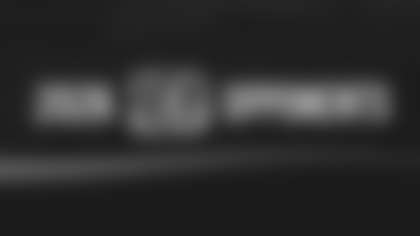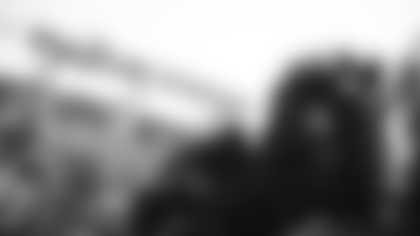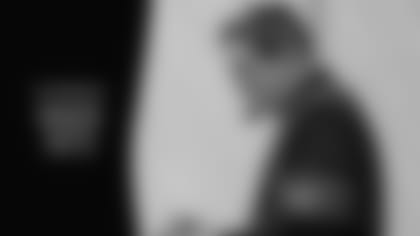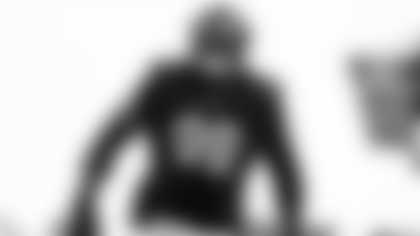Paul Brown warned that before the Rams had the most distinctive helmet in the National Football League, people saw the horns and fell out of their chairs laughing. But when one of his Bengals saw the black stripes racing across their orange helmets, he didn't take it sitting down and threw it into the ground.
The way Bengals president Mike Brown remembers it 40 years after that first Spinney Field practice with the new helmets, Glenn Cameron, their talented, fiery veteran linebacker, walked by him and fired the thing into the turf.
"If you think I'm going to wear that blankety-bank helmet," Cameron told him, "you're a blankety-blank."
Years later, after Cameron ended one of the better 11-season runs in team history best known as a member of the linebackers corps that made the Bengals 3-4 one of the most feared defenses in the league, Brown says he got a letter from a Cameron, a lawyer in his native Florida.
"He said he would very much appreciate it if we would send him a helmet because he would like to display it on the mantle in his den," said Brown this week, laughing in his chair as the Bengals prepare for another uniform switch. "Glenn was just more outspoken. A lot of the reaction was what it was at first. Then it evolved. Players took pride in it as time went by."
So did the fans, which is why the striped helmet is going nowhere. The Bengals announced Thursday that they're getting new uniforms in time for this season, but Paul Brown's helmet that went from idiotic to iconic is still very much on the mantle.
"Paul was looking for the instantaneous recognition," said Dave Lapham, the Super Bowl left guard and long-time Bengals radio analyst who grew up on the 1960s North Shore of Massachusetts rooting for the Rams because of their helmets.
"I hoped the Rams would draft me. Boom, you saw the Rams' helmet and you knew it was the Rams. Same thing with the Cowboys star. You know it's the Cowboys. And that's what this has become. It's one of the most recognizable helmets in the league."
The day of that uniform announcement 40 years ago, Paul Brown said the NFL had been after him "for some while," to get a more distinctive look. Like all football matters league-wide, from drawing up a new play or inventing the face mask, Brown had the final word.
"My father said he wanted a helmet that would take just one look to recognize us from the top seat in the stadium," Mike Brown said. "I think our helmet has stood the test of time. It has established our identity, our trademark, if you will, and that's important to our fans."
Reggie Williams, one of Cameron's partners as the most prolific Bengals linebacker of all time, had emerged with his magnetic personality as one of the Bengals team leaders in the embryonic ESPN era and was a natural to be the defense's model for the uniform unveiling at Kings Island on the night of April 9, 1981.
Williams, the only man to represent a team in a Super Bowl and on a city council at the same time, sensed public opinion even then. While Lapham played football as a youth in suburban Boston, Williams starred in Flint, Mich., also rooting for the Rams, in part because of their Fearsome Foursome defense and, in part, because of the helmets.
He didn't put the Rams ahead of his dad's favorite team, the Cleveland Browns of Jim and Paul Brown, but he can't help note 40 years later, "I liked (the helmet) right away. The Browns still don't have anything on their helmets."
While Williams wore running back Charles Alexander's new No. 40 jersey instead of his No. 57 at the unveiling, he had to squeeze into a size seven helmet. It was the only one there and there was no way guard Glen Bujnoch and his No. 74 could get it on his head. Williams figures Bujnoch was probably an eight while he had a helmet size of somewhere around a seven and a quarter. Maybe even a seven and a half.
Thus, Reggie Williams became the first Bengal to wear the striped helmet. At least in public.
"I'm trying to squeeze into that helmet and Booj is laughing his head off," Williams said. "He spent his whole career squeezing into helmets."
But opponents made sure the Bengals didn't get a swelled head about their new hats. Lapham remembers the other team saying harmless but aggravating stuff like, "Oh, real tough. Tigers. Tony the Tiger."
Cornerback Louis Breeden, whose 102-yard interception return later that year was the longest play of their biggest year, recalls the Seahawks giving it to them pretty good in the '81 opener at Riverfront Stadium.
"It took some getting used to. I don't think initially the guys really appreciated it," Breeden said. "When we came out against Seattle, they were saying things about the helmet and you're thinking, 'Damn, is it really that bad? Let me sit here and back up 20 yards and look at it again."
At the Pro Bowl after that season, when the AFC was finishing up a practice with PATs, the Bengals' Anthony Munoz, two years into a career making him the greatest left tackle ever, glimpsed the jagged maw of Steelers linebacker Jack Lambert across the line of scrimmage.
"He sat over there on the other side," Munoz recalled, "and he said, 'You know what? Those helmets look like bleep."
But Munoz had to laugh in his chair because at that point he was 4-0 against the Steelers and a few weeks before the Bengals had clinched the AFC Central at Three Rivers. The new helmets and uniforms obviously didn't turn their first Super Bowl team into AFC champs, but the champs probably helped turn the helmets into a staple.
"When you win ball games and end up 12-4, you know what? No one is going to go around making fun of this helmet," Breeden said. "The helmets are like that golf club. You try one club. You try another. Then another. But it's the swing, not the club. And we put it all together."
Heading into that sophomore season, Munoz noticed things he hadn't seen as a rookie. The stripes had sparked something. The fans were showing up with painted faces. Who Dey became the battle cry. Stripes streaked everywhere. A 5-0 November didn't hurt. Button-down Paul Brown had a modern team to match what The Cincinnati Enquirer's Lonnie Wheeler called the uniforms "decked out for the disco."
Go through all the years of the Bengals uniforms with this historical photo gallery.
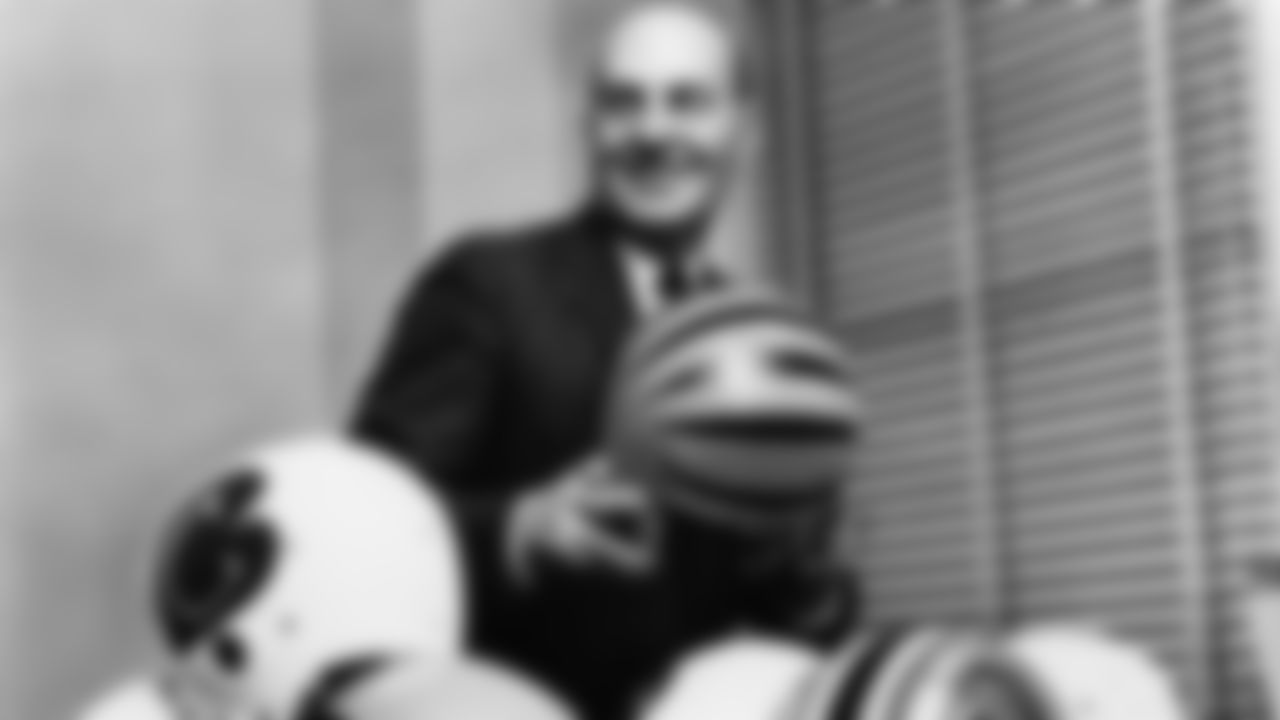
1968: Paul Brown, President of the Cincinnati Bengals of the American Football League, is trying to select the design of the team's helmets to be worn by his team when it starts play in the A.F.L.
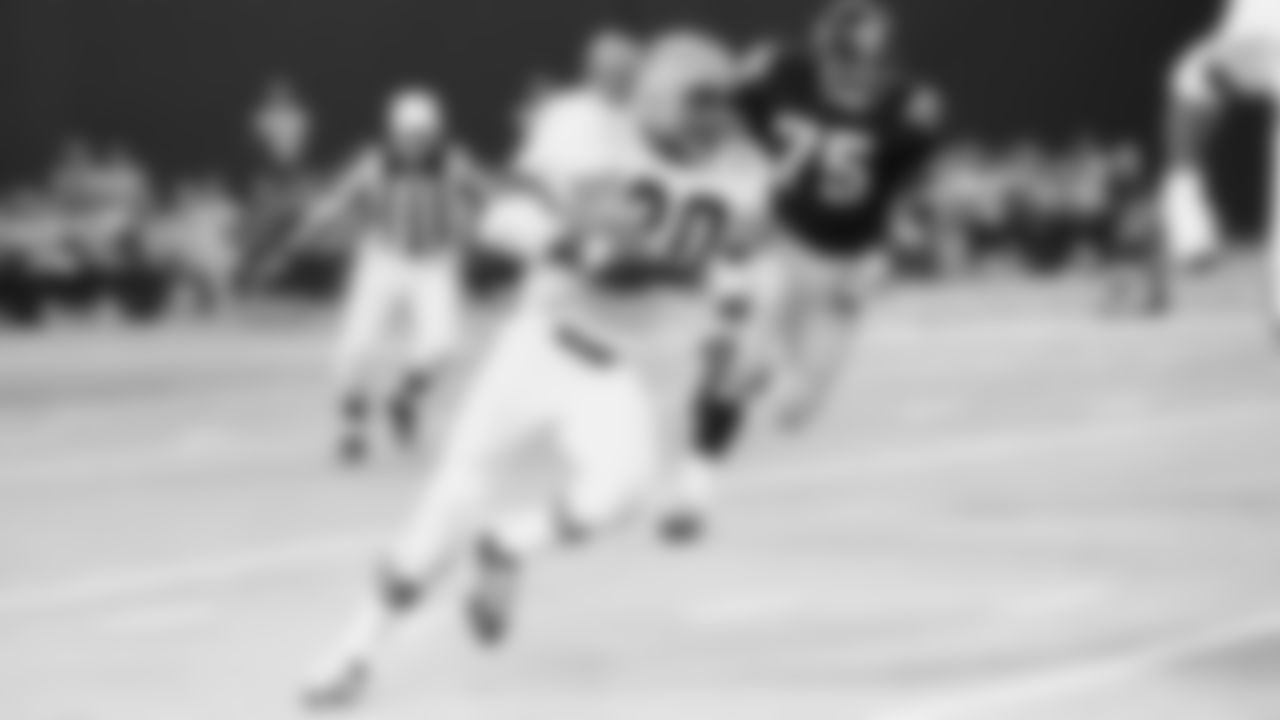
1970: Jess Phillips (30) gallops around right end against the Pittsburgh Steelers on Monday Night Football.
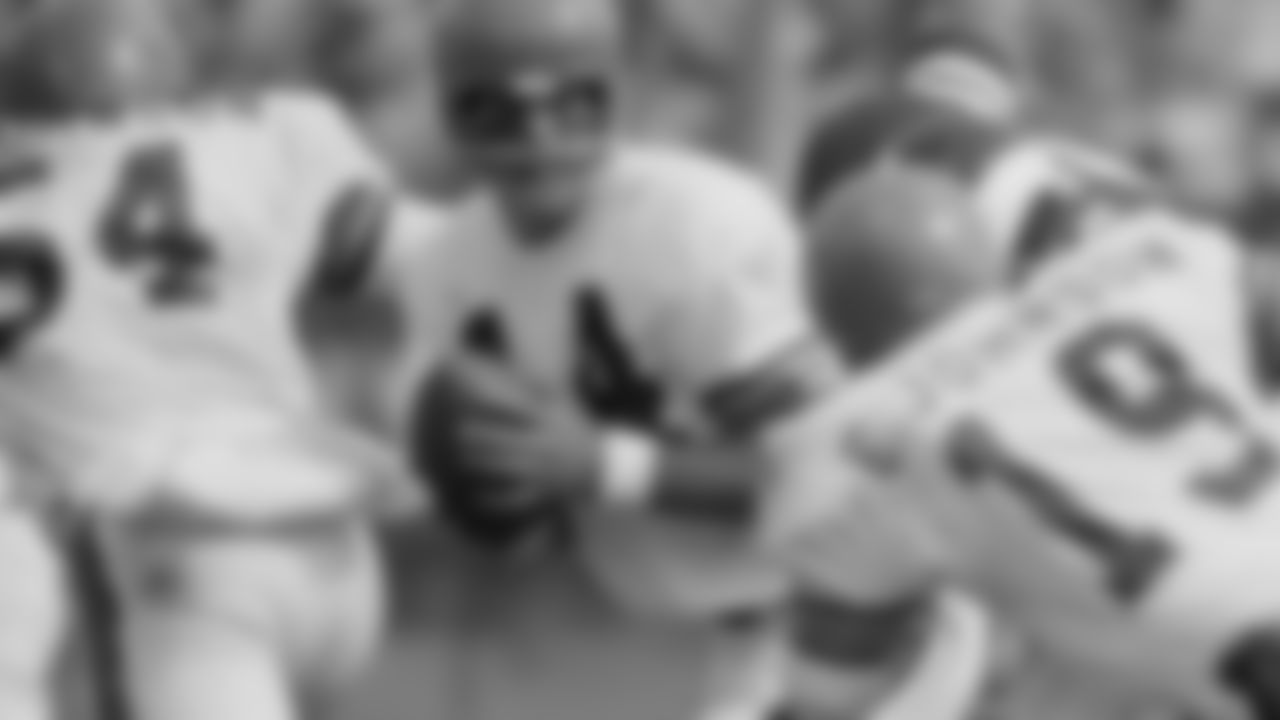
1972: Quarterback Ken Anderson in action.
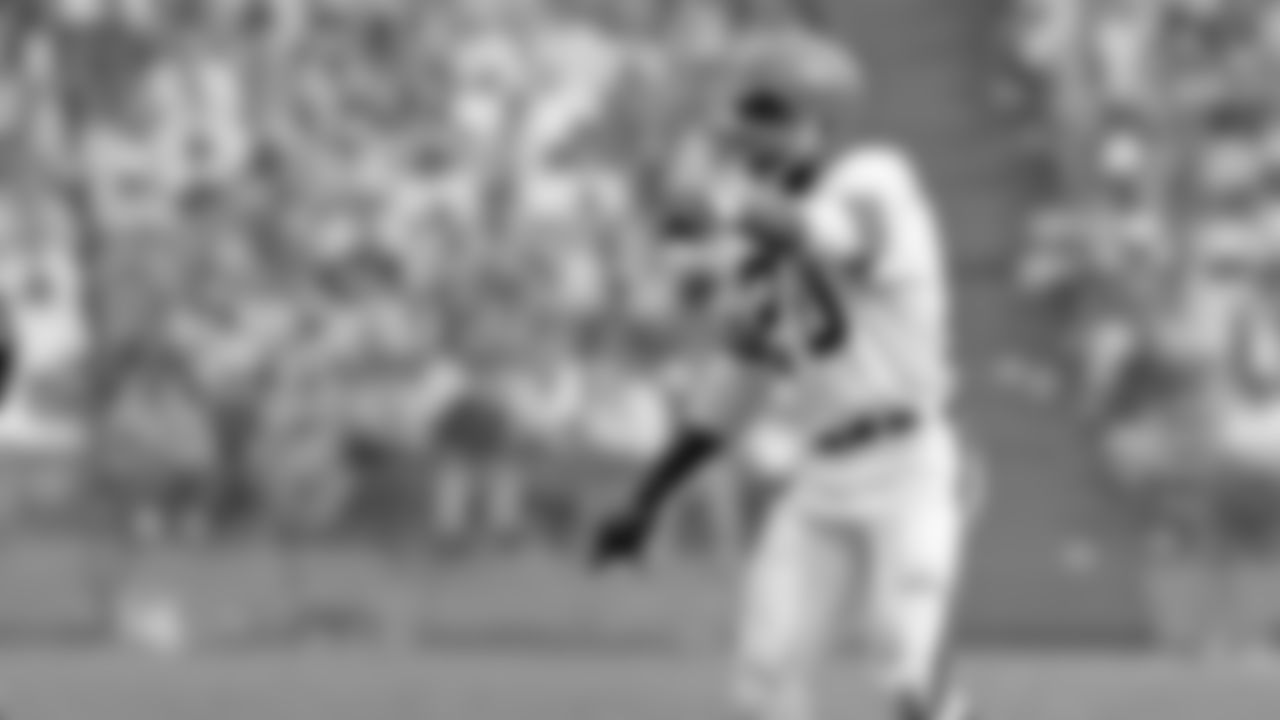
1974: Cornerback Lemar Parrish
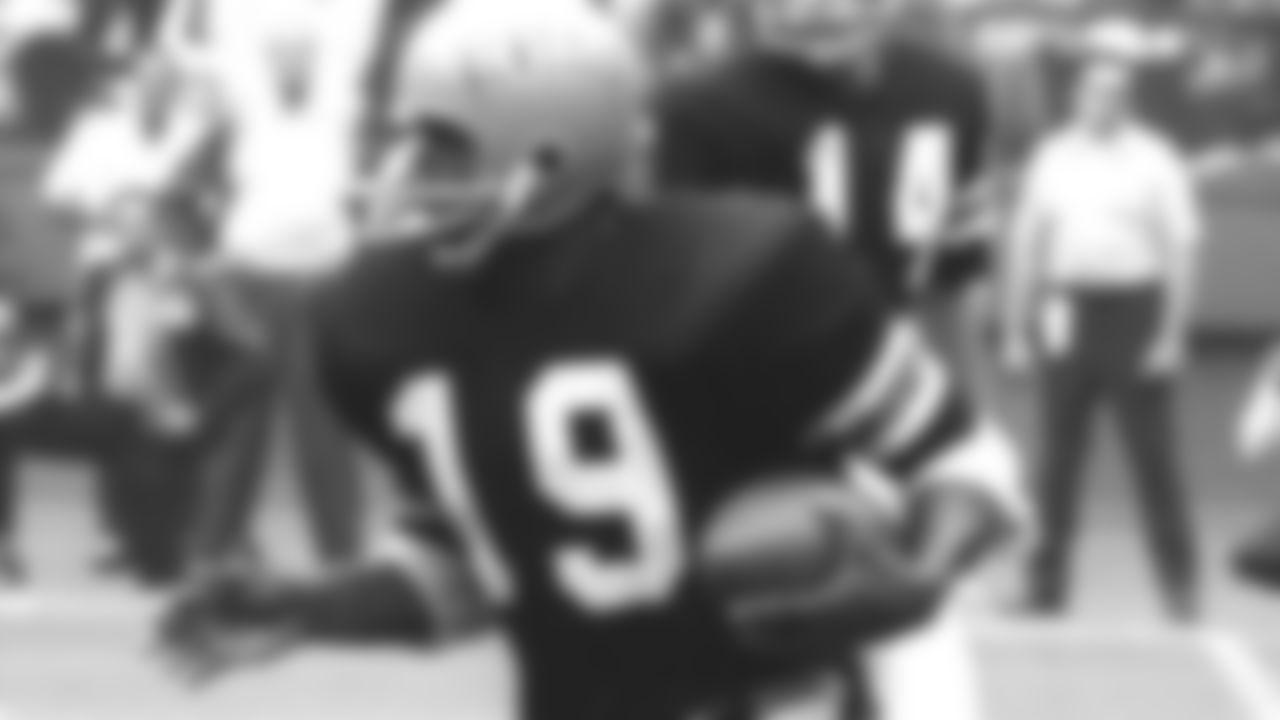
1973: Running back Essex Johnson.
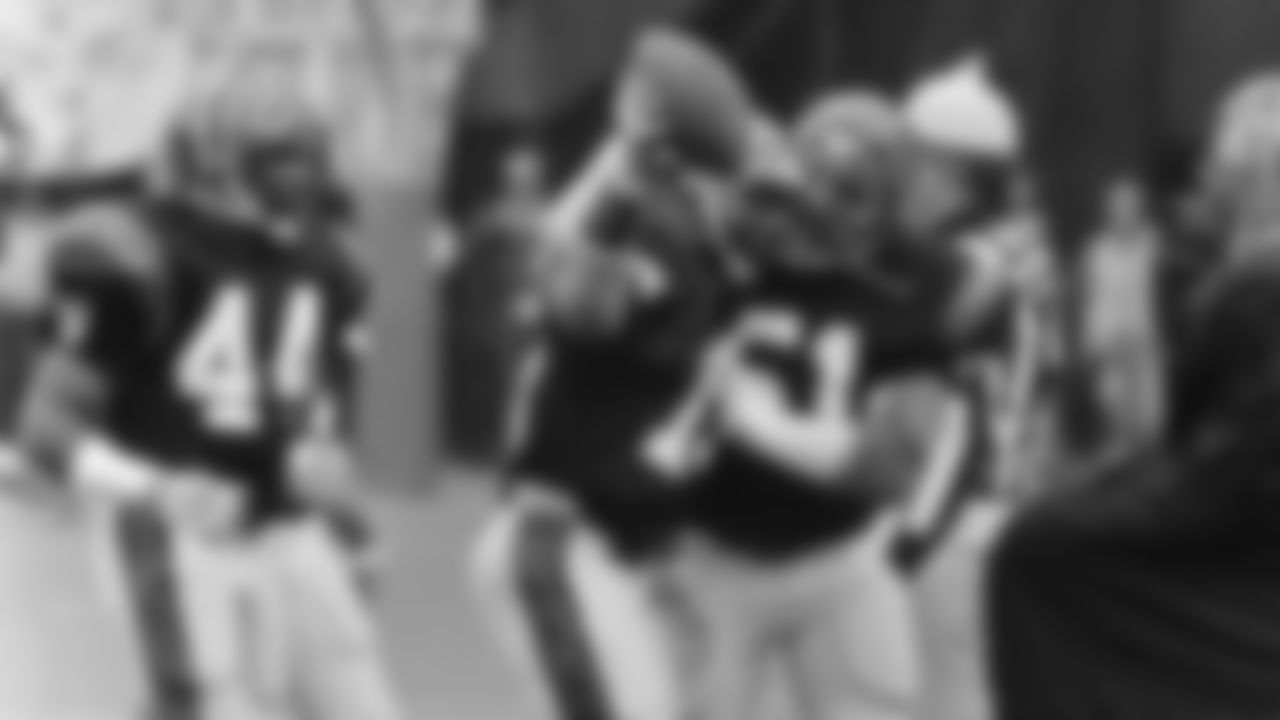
1982: Ken Riley holds up the ball after recording an interception in the AFC Playoffs.
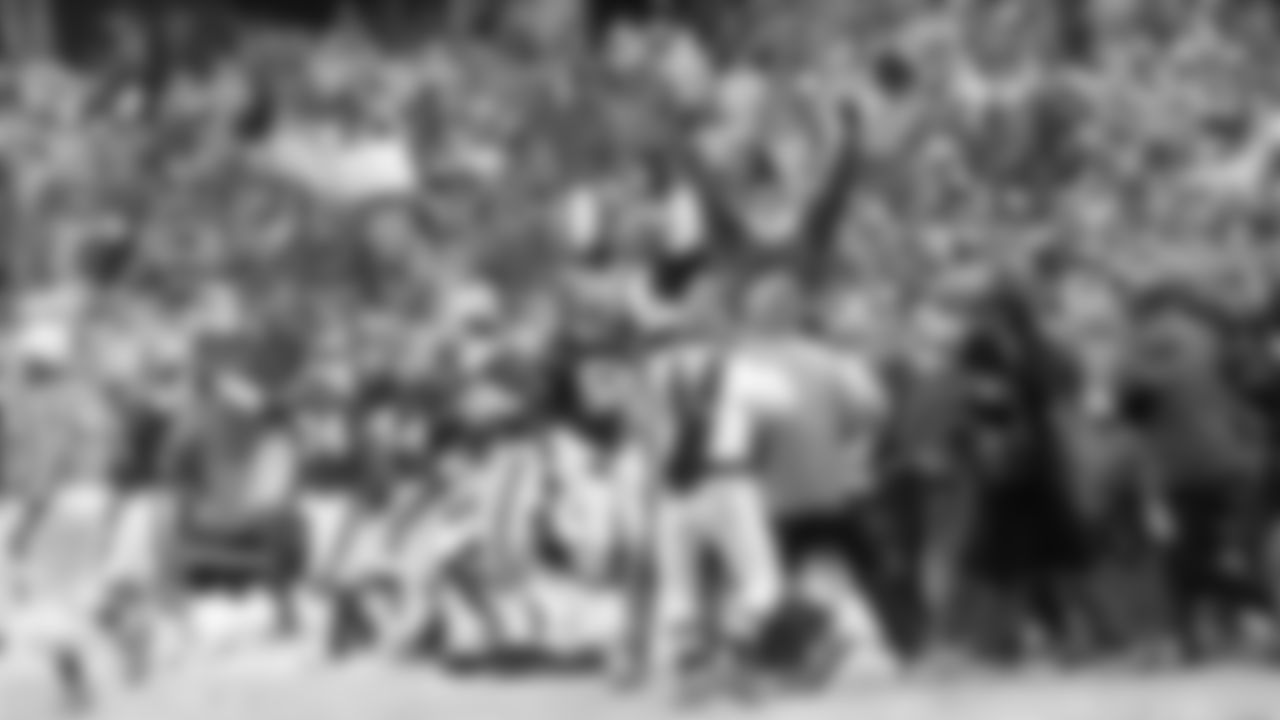
The Cincinnati Bengals break out in celebration after defeating the San Diego Chargers 27-7 in the AFC championship game in Cincinnati, Jan. 10, 1982. (AP Photo)
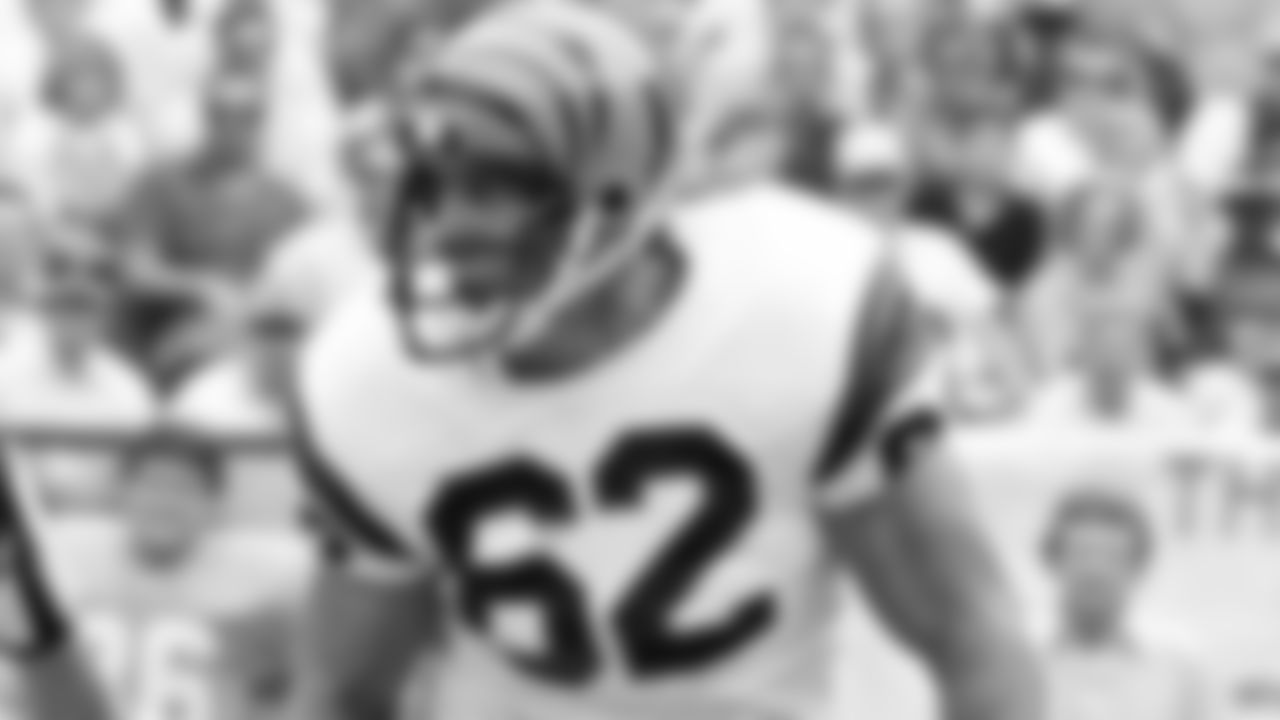
1982: Offensive lineman Dave Lapham in action.
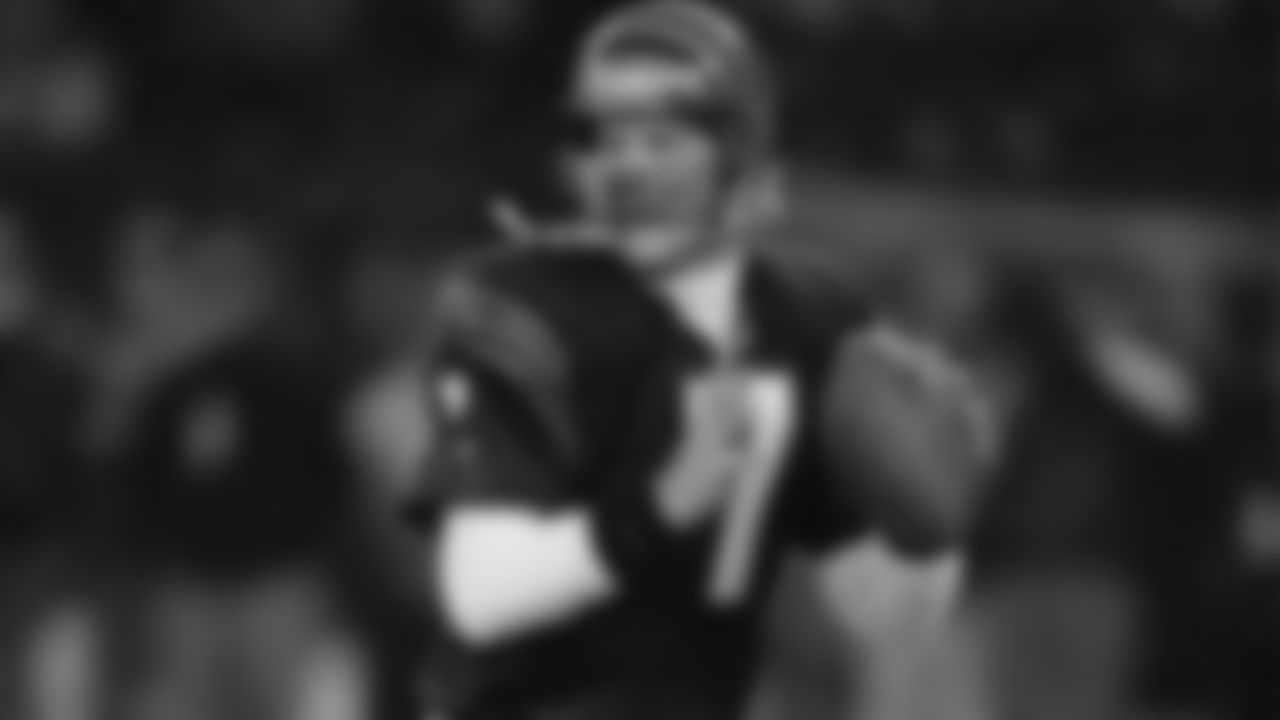
1986: Quarterback Boomer Esiason in action.
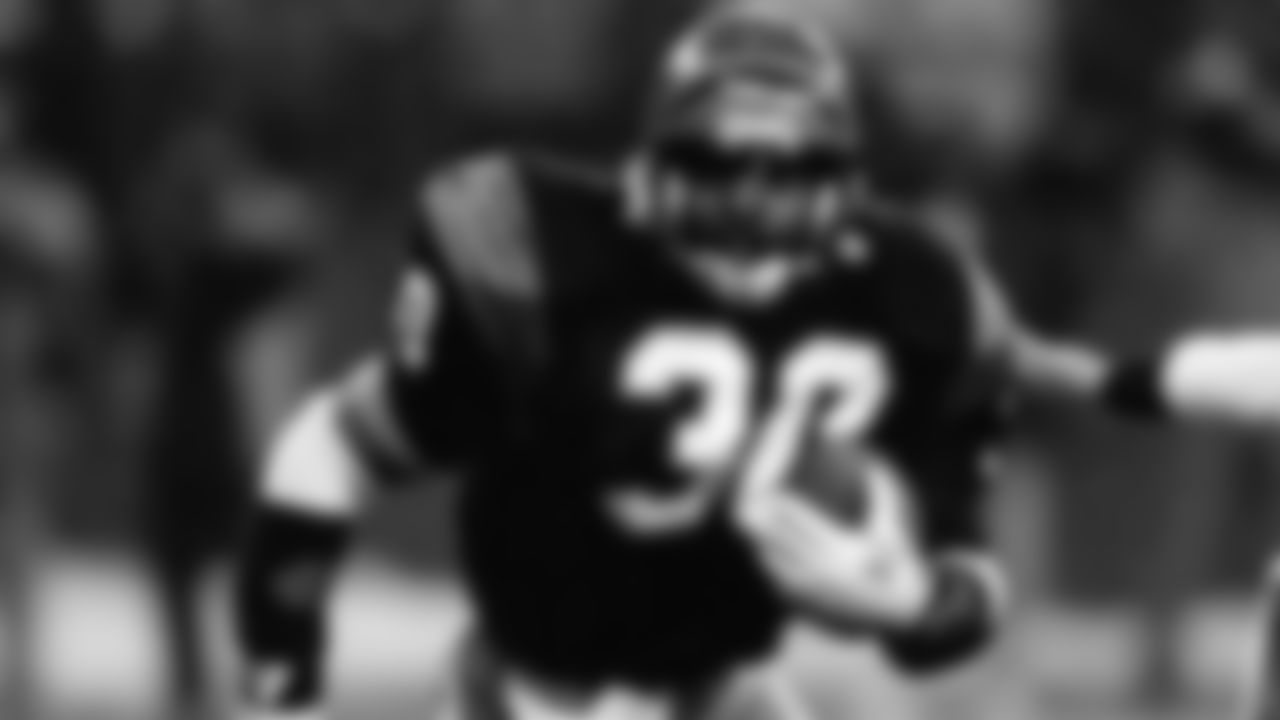
1988: Running back Ickey Woods in action
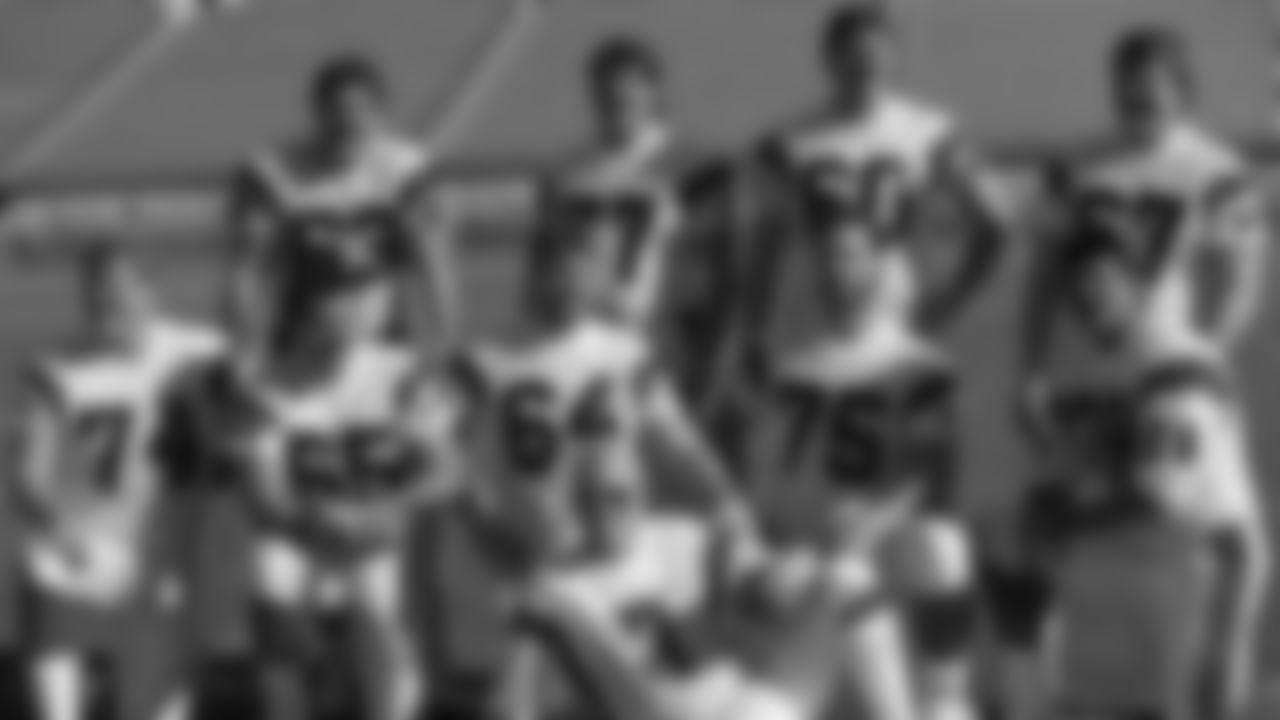
1989: Cincinnati Bengals quarterback Boomer Esiason (7) poses with the Bengals' offensive line in Miami as they turn out for Super Bowl Media Day on Tuesday, Jan. 17, 1989. From left, back row: Joe Walter (63), Herb Wester (77), Dave Smith (60), David Douglas (67). Front: Brian Blados (74), Max Montoya (65), Bruce Kozerski (64), Bruce Reimers (75), Anthony Munoz (78).
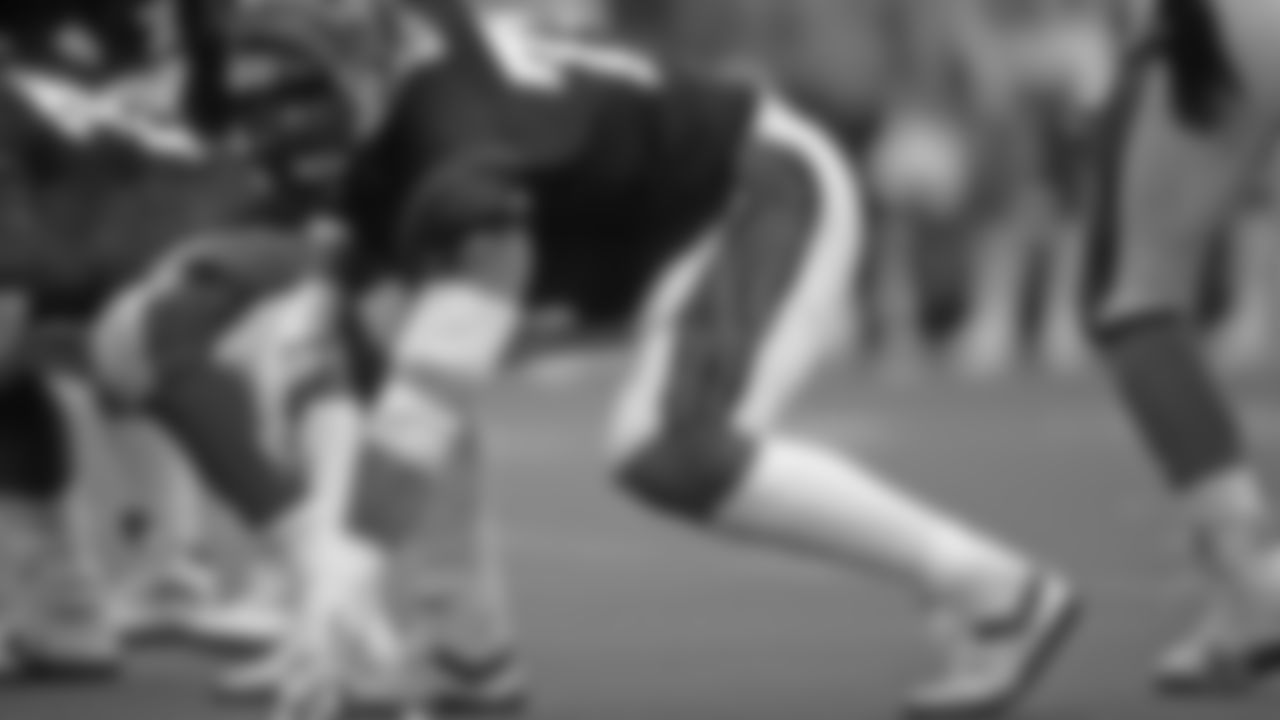
Anthony Munoz, Hall of Fame Class of 1998, prepares for the snap during the 1990 AFC Wild Card Playoff Game on January 6, 1991 at Riverfront Stadium in Cincinnati, Ohio.
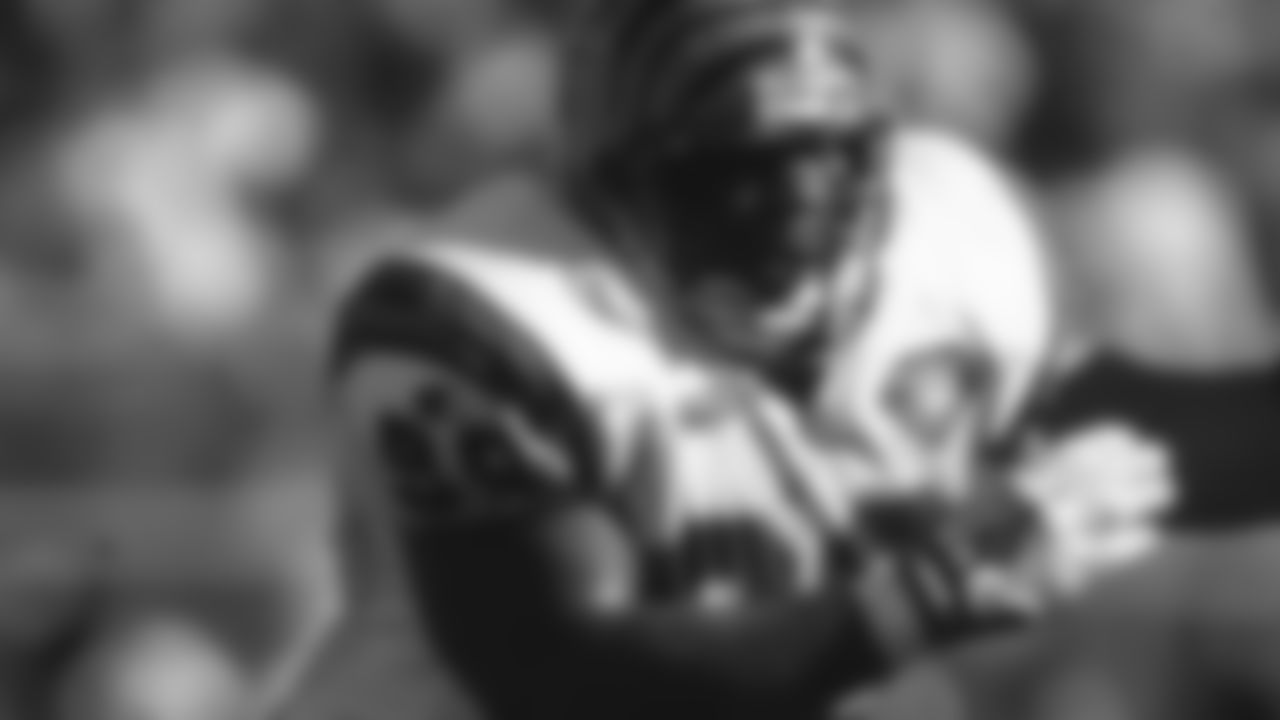
1994: Defensive tackle Dan Wilkinson (99) is seen in action.
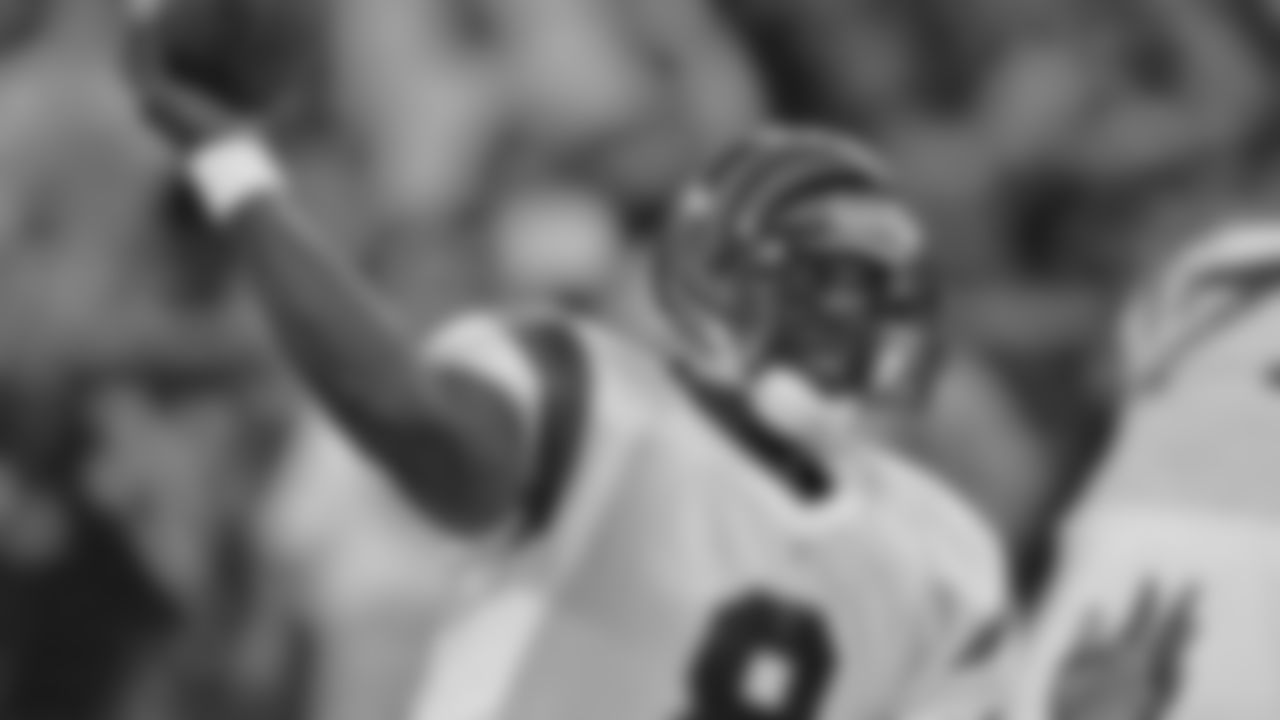
1995: Quarterback Jeff Blake in action.
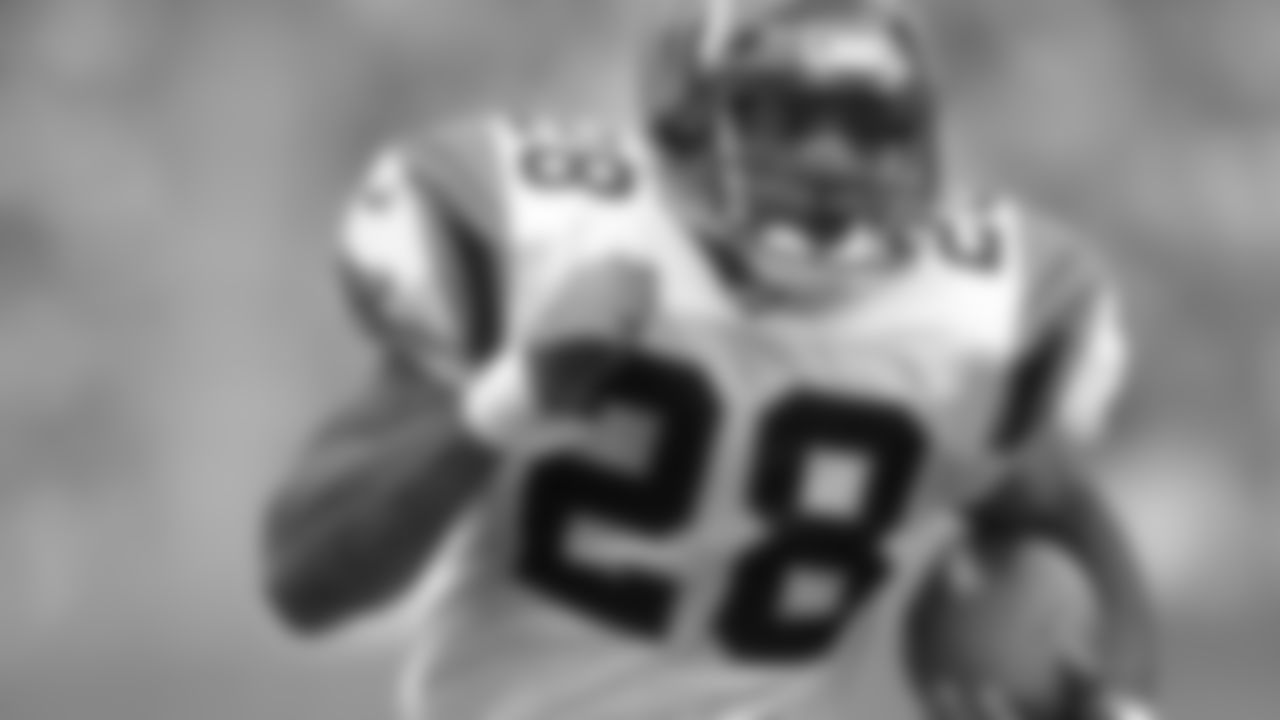
1999: Running back Corey Dillon in action.
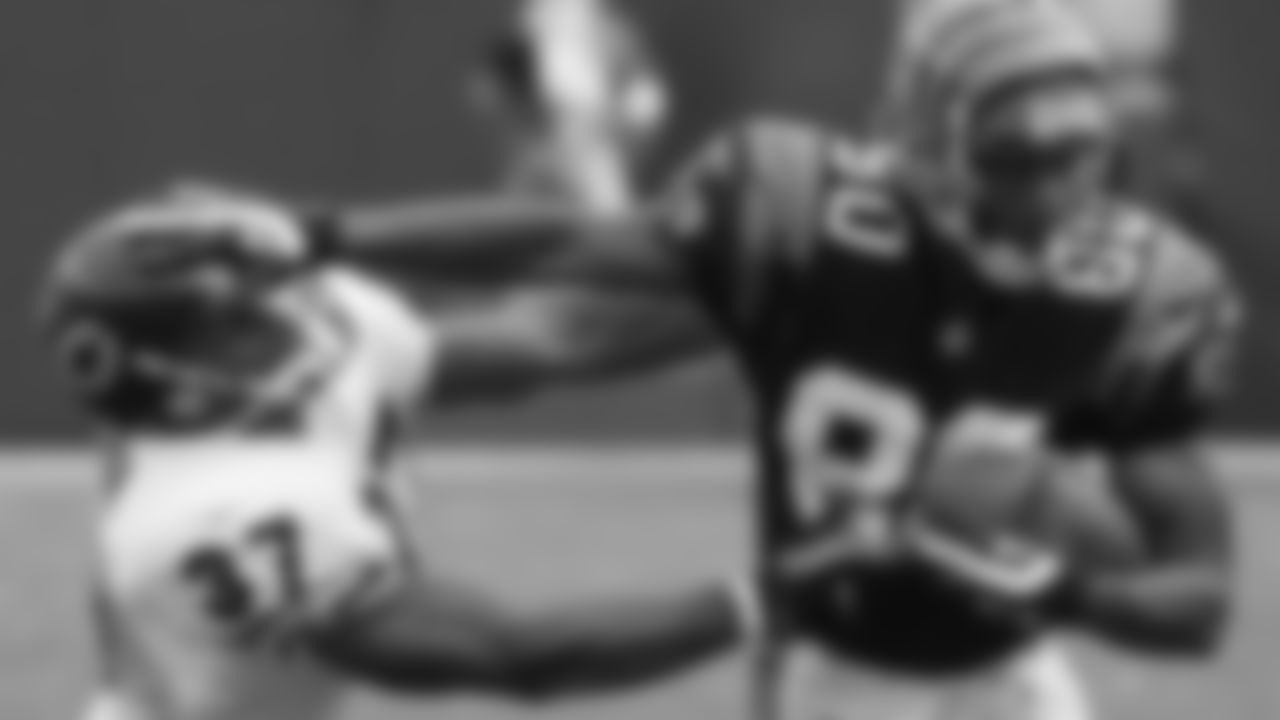
2000: Wide receiver Peter Warrick in action.
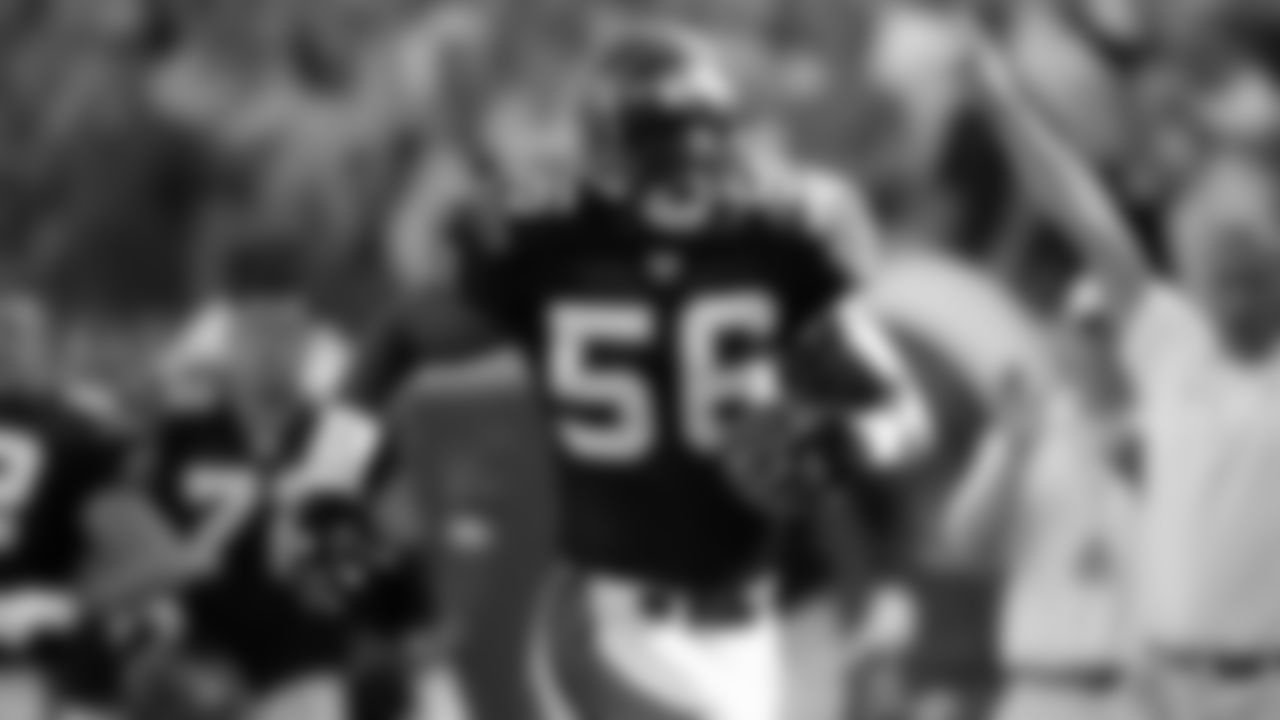
2002: Linebacker Brian Simmons returns an interception for a touchdown.
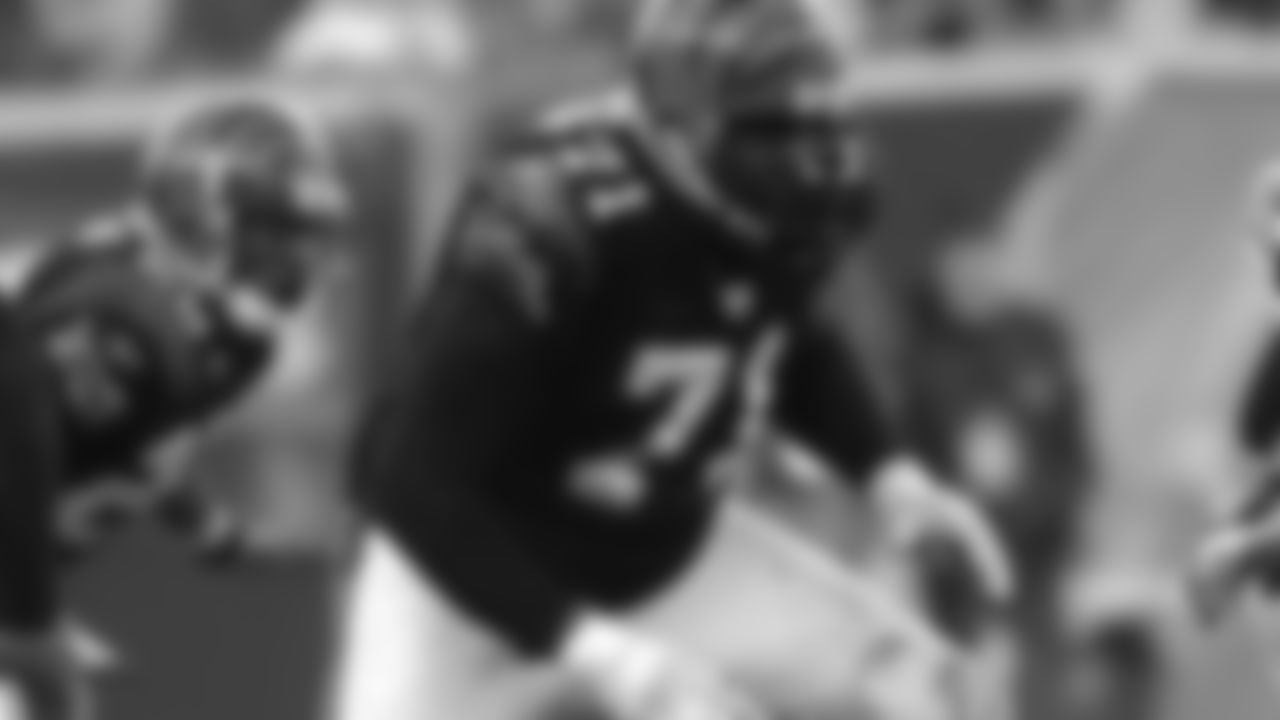
2003: Willie Anderson blocking during a game at Paul Brown Stadium.
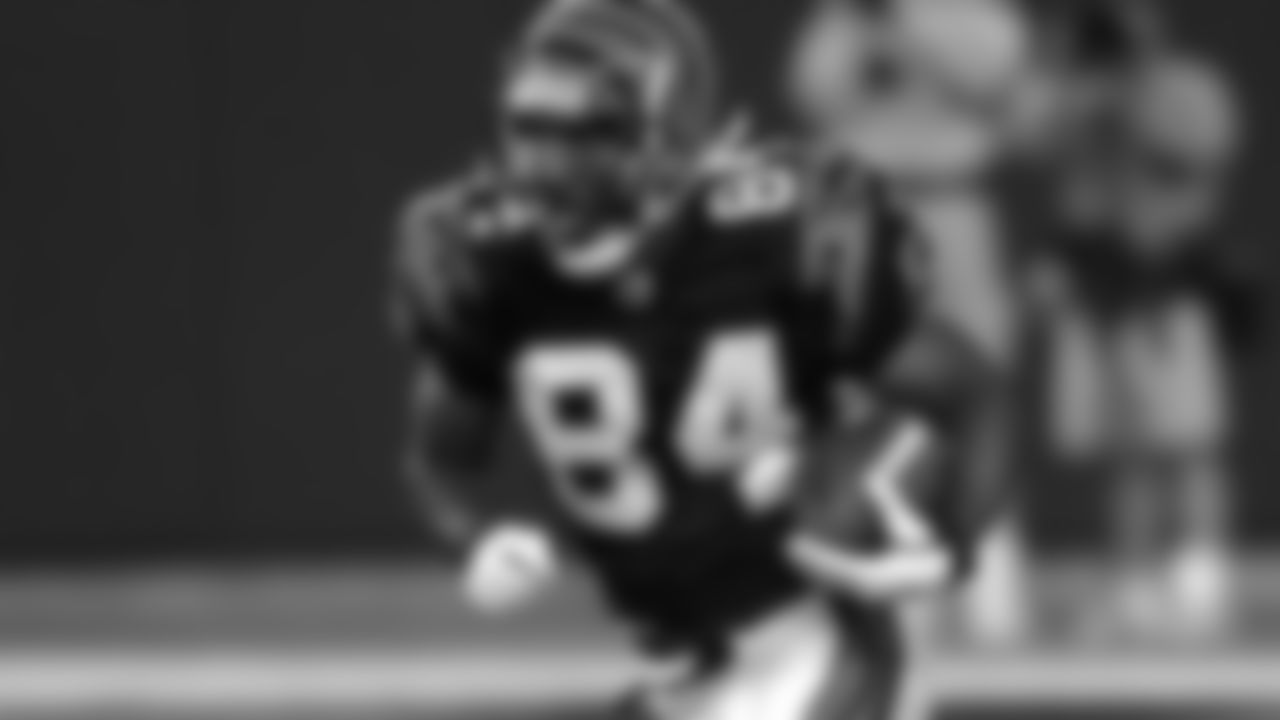
2003: T.J. Houshmandzadeh in action.
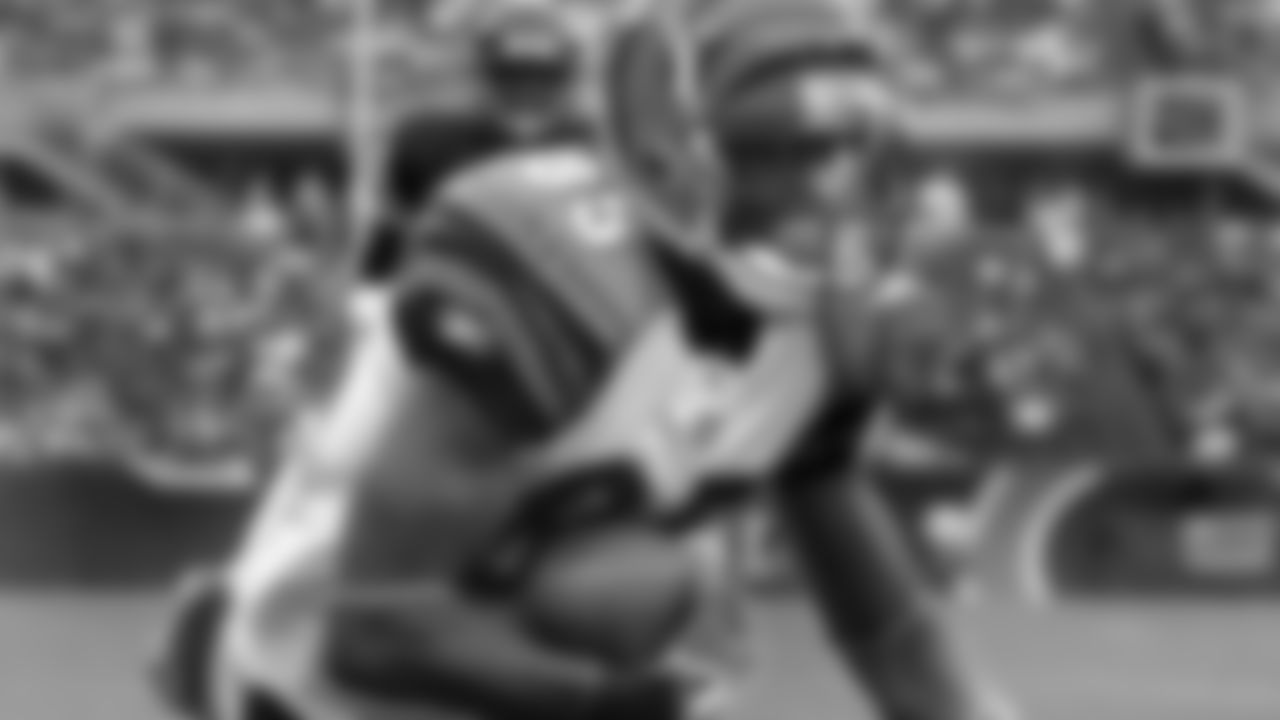
2005: Wide receiver Chad Johnson in action.
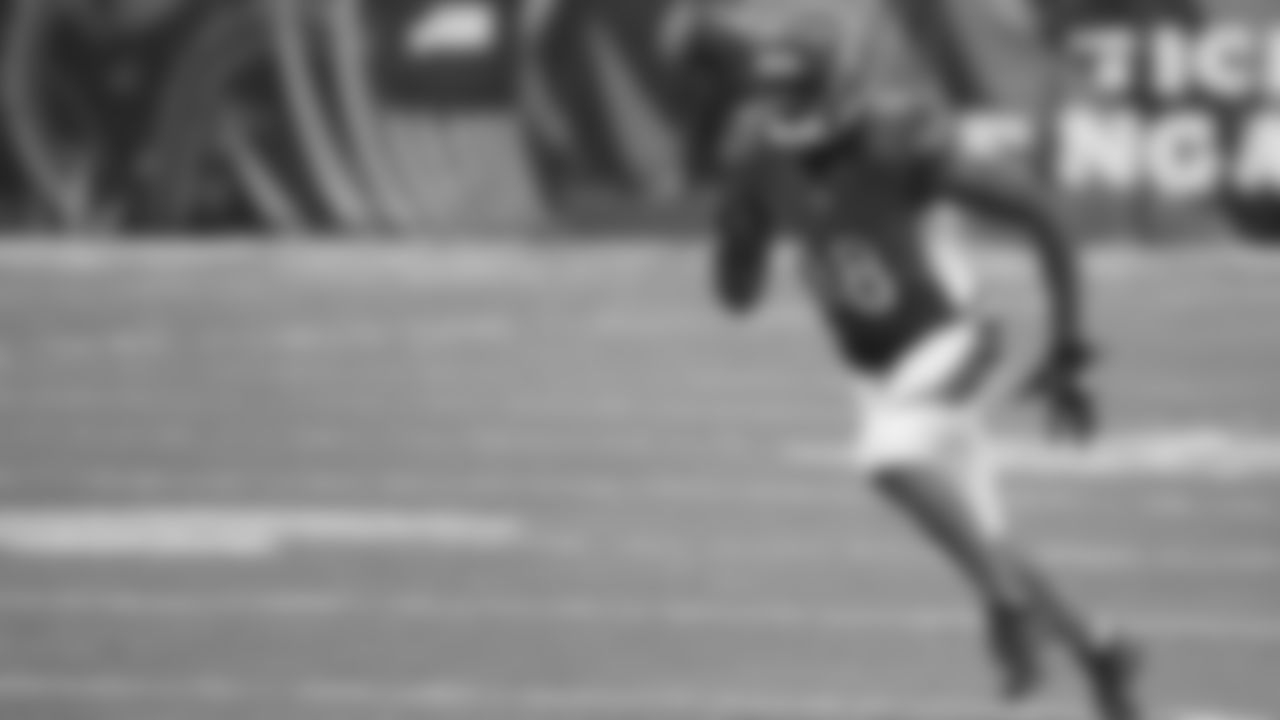
2013: Wide receiver A.J. Green in action wearing the orange alternate jersey.
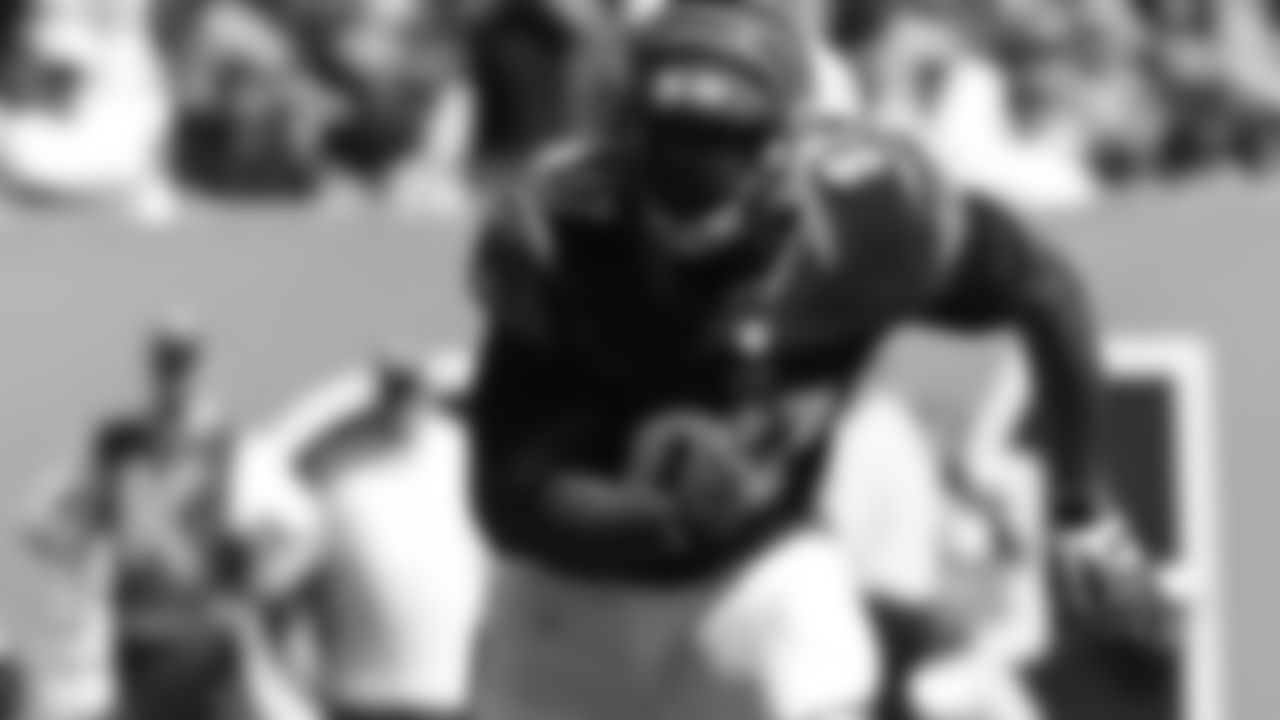
2014: Defensive tackle Geno Atkins in action at Paul Brown Stadium
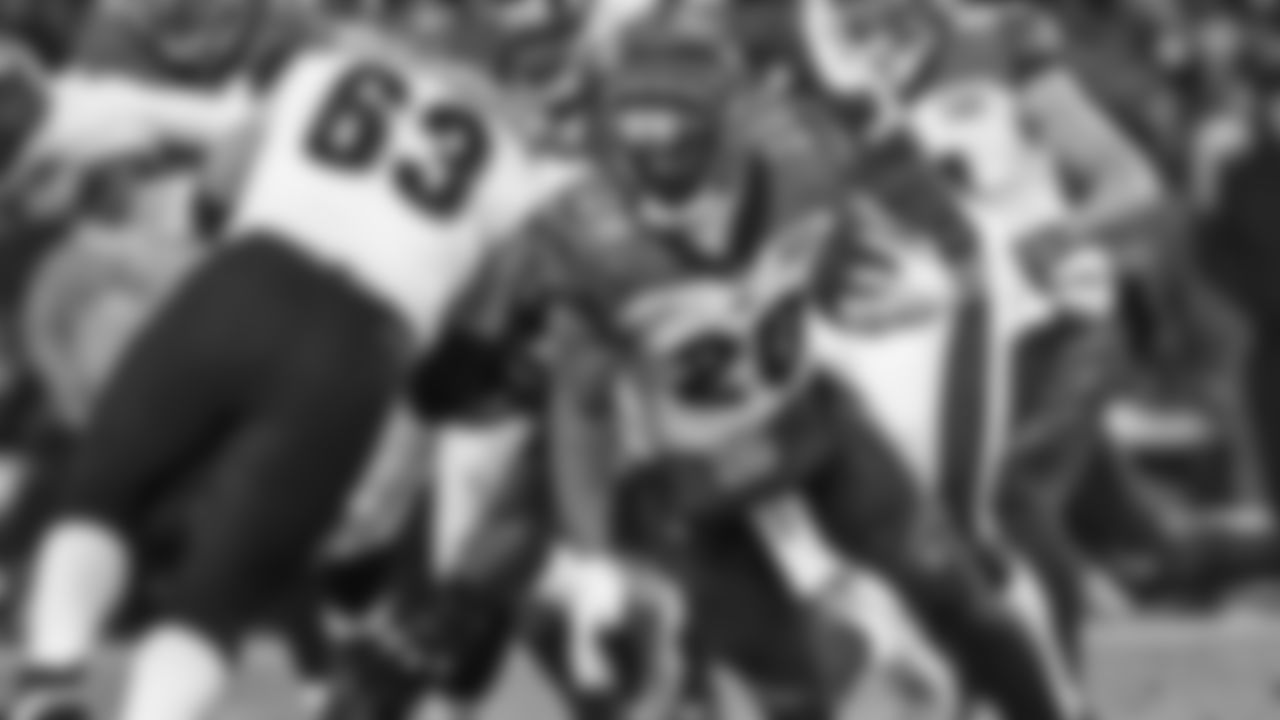
2017: Running back Joe Mixon (28) carries the ball.
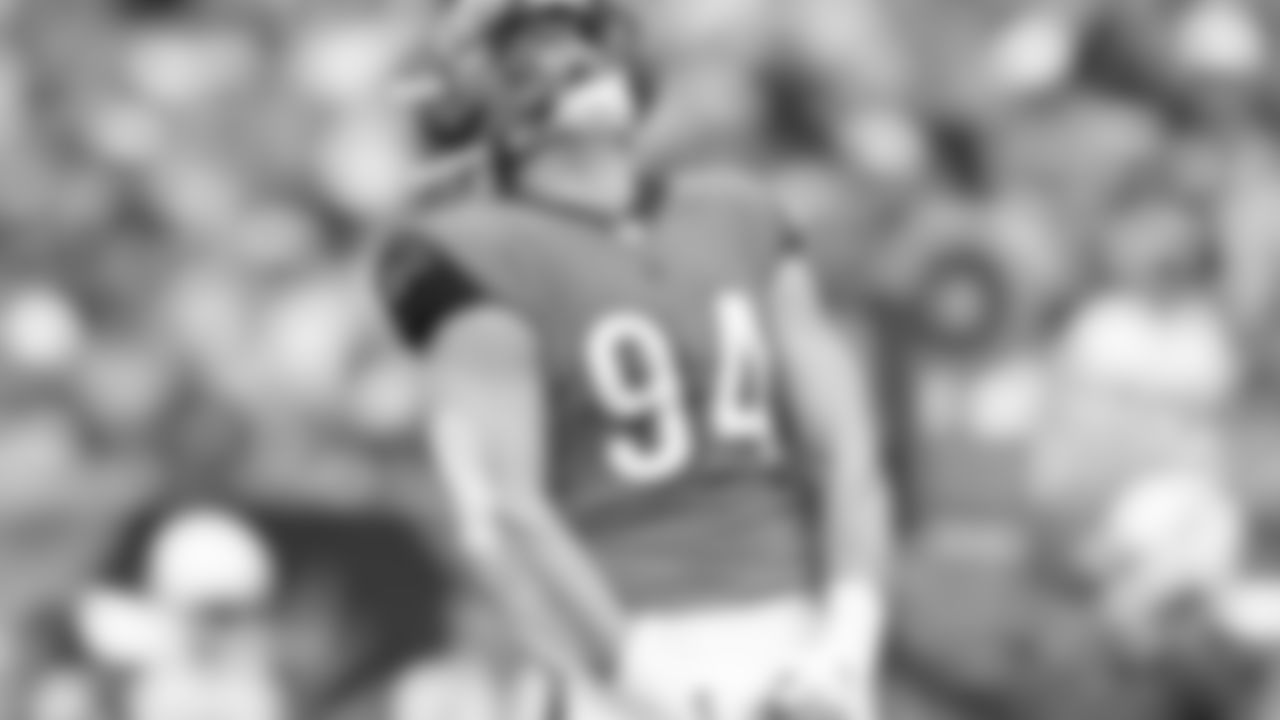
2019: Sam Hubbard celebration
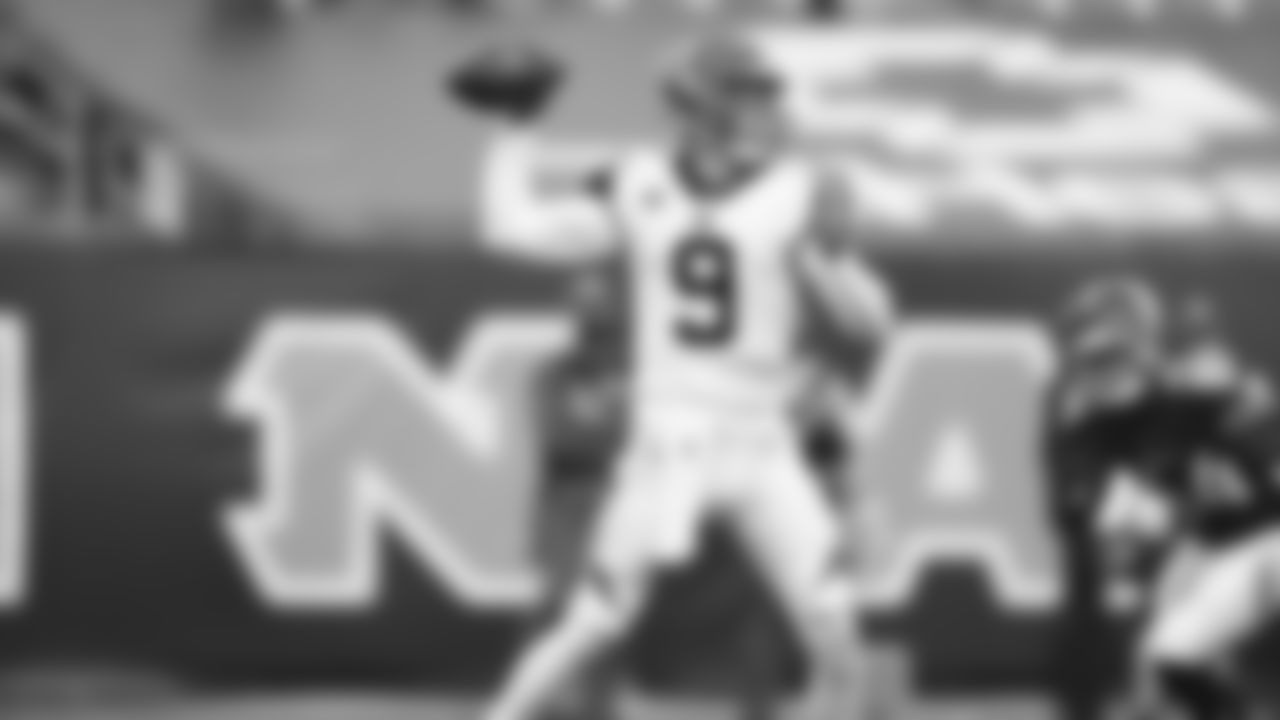
2020: Quarterback Joe Burrow throws a pass in the Color Rush jersey combination.
"People thought he was conservative. But we knew him better. He really wasn't," Mike Brown said. "He had something of an intuition. He would arrive at a good point. However he did it was something of a mystery. Something that was considered radical is now seen as standard. Exceptional even. He did that in a lot of areas."
Around this time 40 years ago, when Paul and Mike and others were looking at designs, one of them was what Mike calls "stripes that looked like they were off a barbershop pole." Paul and the group rejected it. They went with this one, a decision that current Bengals equipment manager Adam Knollman says is validated nearly every road trip.
"I can't tell you how many visiting locker rooms we go into," Knollman said, "and how many guys in there open up the bags and pull out the helmets and say something like, 'This was my favorite helmet growing up,' or 'This is why I started rooting for the Bengals.'"
When they hang the new uniforms this season, it will be with those same helmets.
"It was pretty cool," Munoz said.
Cool enough to survive any uniform change.




